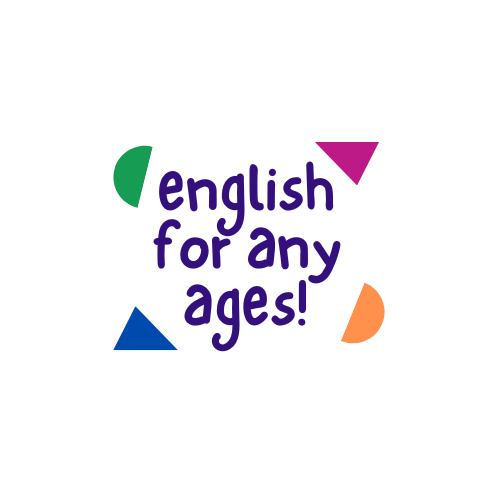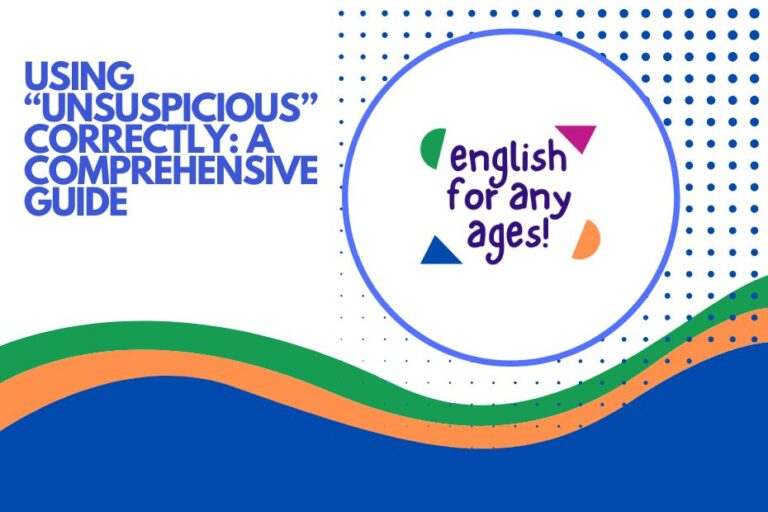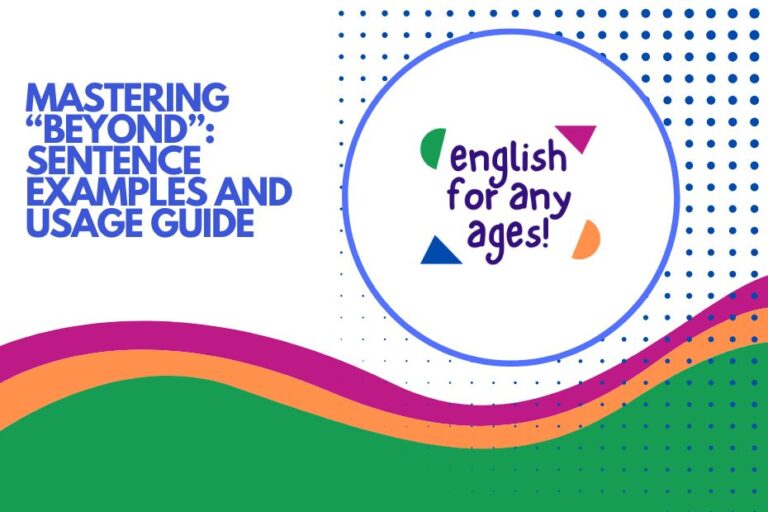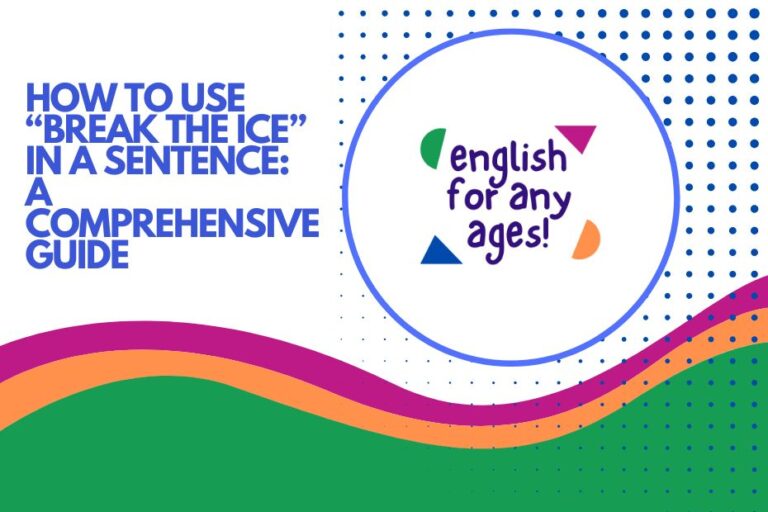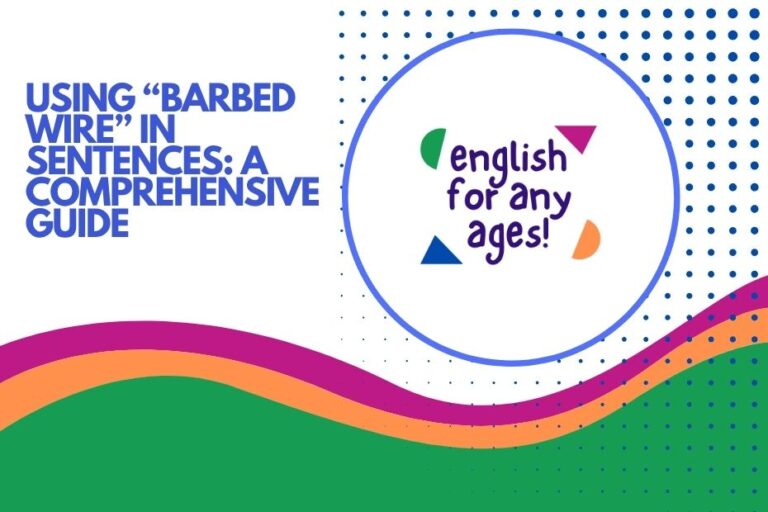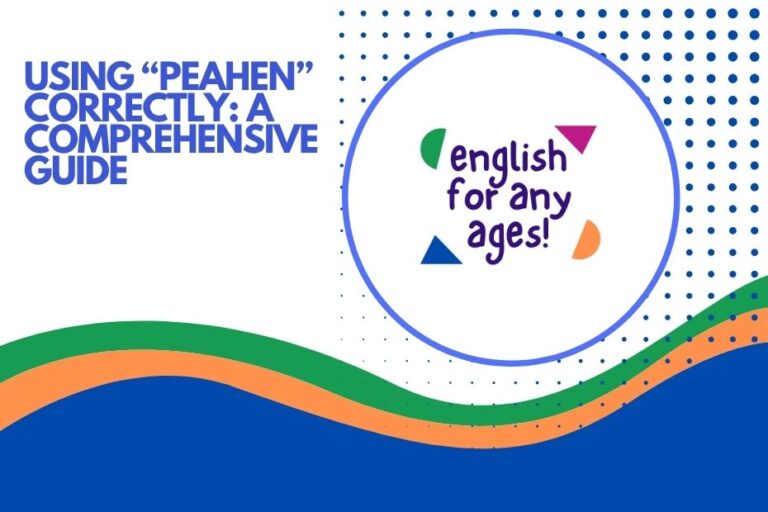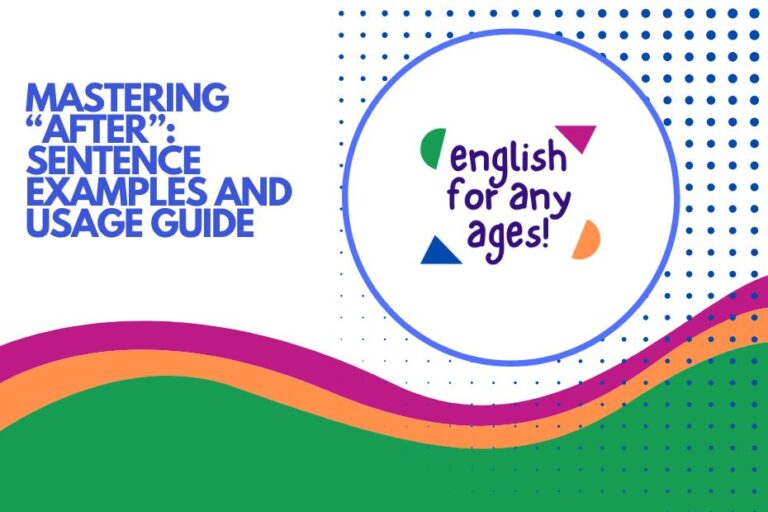Mastering “Near”: Sentence Examples and Usage Guide
The preposition “near” is a fundamental word in the English language, used to indicate proximity or closeness in space, time, or relationship. Understanding how to use “near” correctly is crucial for clear and accurate communication.
This article provides a comprehensive guide to using “near,” complete with definitions, structural breakdowns, various examples, usage rules, common mistakes, and practice exercises. Whether you’re a beginner or an advanced learner, this guide will help you master the nuances of “near” and enhance your overall English proficiency.
Table of Contents
- Definition of “Near”
- Structural Breakdown
- Types of “Near” Usage
- Examples of “Near” in Sentences
- Usage Rules for “Near”
- Common Mistakes with “Near”
- Practice Exercises
- Advanced Topics
- Frequently Asked Questions (FAQ)
- Conclusion
Definition of “Near”
The word “near” primarily functions as a preposition, adverb, or adjective in English grammar. As a preposition, “near” indicates that something or someone is not far away in distance, time, or relationship.
It signifies a state of proximity or closeness. It is used to describe spatial relationships, temporal proximity, or the degree of connection between individuals or concepts.
Classification: Preposition, Adverb, Adjective
Function: To indicate proximity or closeness in space, time, or relationship.
Contexts: “Near” is used in a wide variety of contexts, from describing the location of objects and places to specifying the timing of events and the nature of relationships. It serves as a fundamental building block for constructing clear and precise sentences.
Structural Breakdown
When used as a preposition, “near” is typically followed by a noun or noun phrase, which acts as the object of the preposition. The structure is generally:
Near + Noun/Noun Phrase
For example:
- The park is near the school. (Near + noun phrase)
- She lives near here. (Near + adverbial pronoun)
As an adverb, “near” modifies a verb, adjective, or another adverb, indicating that something is close by. As an adjective, “near” typically describes a noun, indicating its proximity.
The meaning remains consistent across these different grammatical roles, always relating to proximity.
Types of “Near” Usage
Indicating Physical Location
One of the most common uses of “near” is to describe physical proximity or location. In this context, “near” indicates that something is close to another object or place.
This is a spatial relationship.
Example: “The bookstore is near the coffee shop.”
Indicating Time Proximity
“Near” can also be used to indicate that an event or occurrence is close in time to another event or point in time. This signifies temporal proximity.
Example: “The holidays are near.”
Indicating Relationship Proximity
In a more abstract sense, “near” can describe closeness in relationships, whether familial, emotional, or conceptual. This indicates a kind of connection or similarity.
Example: “They are near relatives.”
Examples of “Near” in Sentences
The following sections provide detailed examples of how to use “near” in various contexts. Each table includes sentences illustrating the specific usage, helping you understand the nuances of this preposition.
Location Examples
This table illustrates the use of “near” to describe physical proximity. Each sentence provides a clear example of how to indicate that something is close to another location.
| Sentence | Explanation |
|---|---|
| The bank is near the post office. | Indicates the bank is located close to the post office. |
| My house is near the river. | Indicates the house is situated close to the river. |
| The school is near the park. | Indicates the school’s proximity to the park. |
| There’s a gas station near the highway. | Indicates the gas station’s location relative to the highway. |
| The restaurant is near the train station. | Indicates the restaurant’s proximity to the train station. |
| We live near the mountains. | Indicates the home’s proximity to the mountains. |
| The airport is near the city. | Indicates the airport’s location relative to the city. |
| The hospital is near the university. | Indicates the hospital’s proximity to the university. |
| The coffee shop is near my office. | Indicates the coffee shop’s proximity to the speaker’s office. |
| The bakery is near the library. | Indicates the bakery’s proximity to the library. |
| The zoo is near the botanical gardens. | Indicates the zoo’s proximity to the botanical gardens. |
| The stadium is near the convention center. | Indicates the stadium’s proximity to the convention center. |
| There’s a small shop near the corner. | Indicates the shop’s location relative to the corner. |
| The art gallery is near the museum. | Indicates the art gallery’s proximity to the museum. |
| The playground is near the community center. | Indicates the playground’s proximity to the community center. |
| The lake is near the forest. | Indicates the lake’s proximity to the forest. |
| The campsite is near the waterfall. | Indicates the campsite’s proximity to the waterfall. |
| The farm is near the village. | Indicates the farm’s proximity to the village. |
| The beach is near the boardwalk. | Indicates the beach’s proximity to the boardwalk. |
| The theater is near the town square. | Indicates the theater’s proximity to the town square. |
| The flower shop is near the park entrance. | Indicates the flower shop’s proximity to the park entrance. |
| The new café is near the old bridge. | Indicates the café’s proximity to the old bridge. |
| The climbing gym is near the industrial area. | Indicates the climbing gym’s proximity to the industrial area. |
| The antique store is near the historic landmark. | Indicates the antique store’s proximity to the historic landmark. |
| The tech startup is near the university campus. | Indicates the tech startup’s proximity to the university campus. |
| The yoga studio is near the organic market. | Indicates the yoga studio’s proximity to the organic market. |
| The co-working space is near the startup incubator. | Indicates the co-working space’s proximity to the startup incubator. |
Time Examples
This table demonstrates how “near” can be used to indicate temporal proximity. The sentences illustrate that an event is approaching or close in time to a specific point.
| Sentence | Explanation |
|---|---|
| The end of the year is near. | Indicates that the end of the year is approaching. |
| My birthday is near. | Indicates that the speaker’s birthday is approaching. |
| The deadline is near. | Indicates that the deadline is approaching. |
| The holidays are near. | Indicates that the holiday season is approaching. |
| Lunchtime is near. | Indicates that lunchtime is approaching. |
| The weekend is near. | Indicates that the weekend is approaching. |
| The meeting time is near. | Indicates that the meeting is about to start. |
| The time for change is near. | Indicates that a period of change is approaching. |
| The release date is near. | Indicates that the release date is approaching. |
| The opening ceremony is near. | Indicates that the opening ceremony is about to begin. |
| The moment of truth is near. | Indicates that a crucial moment is approaching. |
| The time for action is near. | Indicates that it is almost time to take action. |
| The hour of decision is near. | Indicates that a decision must be made soon. |
| The event is near. | Indicates that the event is approaching. |
| The start of the project is near. | Indicates that the project will begin soon. |
| The concert is near. | Indicates that the concert is approaching. |
| The election is near. | Indicates that the election is approaching. |
| The anniversary is near. | Indicates that the anniversary is approaching. |
| The graduation is near. | Indicates that graduation is approaching. |
| The premiere is near. | Indicates that the premiere is approaching. |
| The launch is near. | Indicates that the launch is approaching. |
| The deadline for submission is near. | Indicates that the submission deadline is approaching. |
| The arrival of spring is near. | Indicates that spring is approaching. |
| The end of our journey is near. | Indicates that the journey is almost over. |
| The performance is near. | Indicates that the performance is approaching. |
Relationship Examples
This table showcases the use of “near” to describe the closeness of relationships, whether familial, emotional, or conceptual. The sentences illustrate the nature of the connection between individuals or concepts.
| Sentence | Explanation |
|---|---|
| They are near relatives. | Indicates that they are closely related by blood. |
| We are near in spirit. | Indicates a strong emotional or spiritual connection. |
| The two concepts are near in meaning. | Indicates that the concepts are similar in meaning. |
| They are near in age. | Indicates that they are close in age. |
| The families are near in social status. | Indicates that the families have a similar social standing. |
| The ideas are near in their origin. | Indicates that the ideas have similar roots. |
| The goals are near in importance. | Indicates that the goals are of similar significance. |
| The siblings are very near. | Indicates a very close relationship between siblings. |
| Their cultures are near in tradition. | Indicates that the cultures share similar traditions. |
| The projects are near in scope. | Indicates that the projects are of similar size and complexity. |
| They are near in their beliefs. | Indicates that they share similar beliefs. |
| The friends are near in understanding. | Indicates that the friends share a deep understanding. |
| The colleagues are near in their professional goals. | Indicates that the colleagues have similar career aspirations. |
| The neighbors are near in their community involvement. | Indicates that the neighbors are equally involved in community activities. |
| The team members are near in their commitment to the project. | Indicates that the team members are equally dedicated to the project. |
| Their experiences are near in similarity. | Indicates that their experiences are very similar. |
| The languages are near in their vocabulary. | Indicates that the languages share many words. |
| The disciplines are near in methodology. | Indicates that the disciplines use similar methods. |
| Their political views are near. | Indicates that their political views are similar. |
| The songs are near in style. | Indicates that the songs have a similar style. |
| The artists are near in their artistic vision. | Indicates that the artists share a similar artistic vision. |
| The chefs are near in their culinary approach. | Indicates that the chefs have a similar culinary approach. |
| The scientists are near in their research interests. | Indicates that the scientists have similar research interests. |
| The authors are near in their writing style. | Indicates that the authors have a similar writing style. |
Usage Rules for “Near”
To use “near” correctly, it’s important to follow certain usage rules. These rules govern the proper placement of “near” in sentences and help avoid common errors.
Rule 1: Correct Placement
As a preposition, “near” is typically placed before the noun or noun phrase it modifies. Incorrect placement can lead to confusion or grammatical errors.
Ensure that “near” directly precedes the object it is describing the proximity to.
Correct: The store is near my house.
Incorrect: The store my house is near.
Rule 2: Avoiding Redundancy
Avoid using “near” in a way that is redundant or unnecessary. For example, phrases like “very near close” can be simplified to “very near” or “very close.” Clarity is always paramount.
Correct: The station is very near.
Incorrect: The station is very near close.
Rule 3: “Near to” vs. “Near”
While “near” and “near to” are often interchangeable, “near” is generally preferred in modern English usage, especially in formal writing. “Near to” is considered slightly more informal and can sometimes sound redundant.
Preferred: The airport is near the city.
Acceptable (but less formal): The airport is near to the city.
Common Mistakes with “Near”
Even experienced English speakers sometimes make mistakes with “near.” Being aware of these common errors can help you avoid them.
| Incorrect | Correct | Explanation |
|---|---|---|
| The library is locate near the park. | The library is located near the park. | Missing the ‘d’ at the end of located. |
| Near of the school is a store. | Near the school is a store. | Incorrect use of “of” after “near.” |
| My birthday is more near than yours. | My birthday is nearer than yours. | Incorrect use of “more” with “near” – the comparative form is “nearer.” |
| They live very near close to the station. | They live very near the station. | Redundant use of “close.” |
| The end is nearly. | The end is near. | Confusing “near” (preposition/adjective/adverb) with “nearly” (adverb). |
| The shop is in near the bank. | The shop is near the bank. | Unnecessary use of “in.” |
| He sit near of me. | He sat near me. | Incorrect tense and unnecessary use of “of.” |
Practice Exercises
These exercises will help you solidify your understanding of “near” and its correct usage. Each exercise focuses on a different aspect of using “near” in sentences.
Exercise 1: Fill in the Blanks
Complete the following sentences by filling in the blank with the correct form of “near.”
| Question | Answer |
|---|---|
| The cat is sitting _______ the window. | near |
| The deadline is getting _______. | nearer |
| The store is _______ to the post office than the bank. | nearer |
| Their birthdays are quite _______. | near |
| Is there a pharmacy _______ here? | near |
| We live _______ to the beach. | near |
| The concert is _______ approaching. | near |
| The new building is _______ completion. | near |
| They are _______ relatives, not close friends. | near |
| The accident happened _______ the intersection. | near |
Exercise 2: Error Correction
Identify and correct the errors in the following sentences.
| Incorrect Sentence | Correct Sentence |
|---|---|
| Near of the park is a lake. | Near the park is a lake. |
| The school more near my house. | The school is nearer my house. |
| She is nearly my sister’s age. | She is near my sister’s age. |
| The time is nearly over. | The time is near. |
| He lives very near close to the office. | He lives very near the office. |
| The shop is locate near the station. | The shop is located near the station. |
| My birthday is near of Christmas. | My birthday is near Christmas. |
| The station is near from here. | The station is near here. |
| The end finally is near. | The end is finally near. |
| They are near each to other. | They are near each other. |
Exercise 3: Sentence Construction
Write sentences using “near” based on the following prompts.
| Prompt | Example Sentence |
|---|---|
| Describe the location of a library. | The library is near the city hall. |
| Indicate that your vacation is approaching. | My vacation is near. |
| Describe a close family relationship. | They are near relatives. |
| Indicate that a concert is coming soon. | The concert is near. |
| Describe a shop close to a landmark. | The souvenir shop is near the Eiffel Tower. |
| Indicate the proximity of two towns. | The two towns are near each other. |
| Describe the end of a project. | The end of the project is near. |
| Indicate a close friendship. | They are near friends. |
| Describe the location of a park. | The park is near the river. |
| Indicate an upcoming holiday. | The holiday season is near. |
Advanced Topics
For advanced learners, understanding idiomatic expressions and formal usage of “near” can further enhance their command of the English language.
Idiomatic Expressions with “Near”
There are several idiomatic expressions that use “near.” Understanding these can add depth to your comprehension and fluency.
- Near and dear: Very important or beloved. Example: “This project is near and dear to my heart.”
- Near miss: A situation where an accident or problem was narrowly avoided. Example: “That was a near miss – the car almost hit us!”
“Near” in Formal Writing
In formal writing, it’s important to use “near” precisely and avoid ambiguity. Opt for “near” over “near to” when possible for a more polished tone.
Also, ensure that the context clearly indicates what is being described as near.
Frequently Asked Questions (FAQ)
Here are some frequently asked questions about using “near” in English grammar.
- Is “near to” always incorrect?
No, “near to” is not always incorrect, but “near” is generally preferred in modern English, especially in formal writing. “Near to” can sound slightly more informal or redundant in some contexts.
- Can “near” be used as an adjective?
Yes, “near” can be used as an adjective. For example, “They are near relatives.” In this case, “near” describes the noun “relatives,” indicating the closeness of the relationship.
- What is the difference between “near” and “nearby”?
“Near” is typically used as a preposition to indicate proximity to a specific object or place. “Nearby” is generally used as an adverb or adjective to indicate that something is in the general vicinity. For example, “The store is near the bank” (preposition) versus “There’s a store nearby” (adverb) or “the nearby store” (adjective).
- How can I improve my use of “near” in sentences?
Practice is key. Read widely and pay attention to how “near” is used in different contexts. Complete exercises that focus on sentence construction and error correction. Ask for feedback from native English speakers or teachers.
- Is it correct to say “close near”?
No, “close near” is redundant. “Close” and “near” both indicate proximity, so using them together is unnecessary. Choose one or the other based on the specific nuance you want to convey.
- When should I use “near” instead of “close to”?
“Near” and “close to” are often interchangeable. However, “near” is generally more concise. Use “near” when you want to be direct and straightforward. “Close to” might be preferred when you want to emphasize the degree of proximity or emotional connection.
- Can “near” be used with abstract concepts?
Yes, “near” can be used with abstract concepts to indicate similarity or connection. For example, “The two ideas are near in meaning.” This usage extends beyond physical proximity to describe conceptual closeness.
- What are some common collocations with “near”?
Some common collocations with “near” include “near future,” “near death experience,” “near the top,” “near perfect,” and “near impossible.” These phrases are frequently used in everyday language.
Conclusion
Mastering the use of “near” is essential for clear and effective communication in English. By understanding its definition, structural patterns, and various usages, you can improve your ability to describe locations, times, and relationships accurately.
Pay attention to the usage rules, avoid common mistakes, and practice regularly to solidify your understanding.
Continue to explore different contexts where “near” is used, and don’t hesitate to ask questions and seek feedback. With consistent effort, you’ll become confident and proficient in using “near” in your everyday communication, enhancing your overall English language skills.
Remember to always check for clarity and precision in your sentences, and strive for natural and fluent expression.
